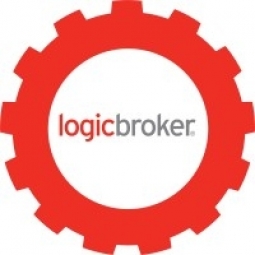Download PDF
Shipwire and Logicbroker: A Partnership for Enhanced eCommerce Enablement
Technology Category
- Networks & Connectivity - 5G
- Platform as a Service (PaaS) - Application Development Platforms
Applicable Industries
- Consumer Goods
- Retail
Applicable Functions
- Logistics & Transportation
- Sales & Marketing
Use Cases
- Retail Store Automation
- Theft Detection
Services
- System Integration
The Challenge
Shipwire, a full-service third-party logistics provider (3PL), was seeking a solution to help their clients comply with retailers’ required EDI and drop ship specifications. They were looking to expand their service offerings and provide their clients with full-service eCommerce enablement. The challenge was to find a way to connect their clients to retail and marketplace channels quickly and efficiently without compromising the quality of service. They were also looking for a solution that offered flexible communication protocols to ensure their clients could comply with retail channel mandates and maximize efficiency. The challenge also included finding a way for their clients to connect to limitless channels without the need for IT department involvement or written code.
About The Customer
Shipwire is a full-service third-party logistics provider (3PL) that fulfills eCommerce orders for direct-to-consumer, retail, and drop shipping channels by leveraging their API and a network of global warehouses. They are dedicated to offering their clients the best possible service and are always looking for ways to expand their service offerings. Their clients, who primarily use EDI to integrate with Shipwire’s system, needed a way to connect quickly to limitless channels without the hassle of IT department involvement or written code. They also needed to comply with retail channel mandates and maximize efficiency.
The Solution
Shipwire partnered with Logicbroker, a company that offers a wide range of integration options and flexible communication including API, EDI, XML, CSV, and more. This partnership allowed Shipwire’s clients to connect quickly to limitless channels by leveraging Logicbroker’s API-first platform. The solution also provided a stable and secure connection for receiving and fulfilling orders from numerous retail channels in one environment. Furthermore, Logicbroker’s knowledgebase and API interface enhanced Shipwire’s customer service. Vendors could now easily navigate retailer requirements by accessing Logicbroker’s dedicated knowledgebase and Learning Management System for all the necessary documentation for a safe and reliable connection. The partnership also extended beyond technology to business strategy, exploring new opportunities and sharing insights into the evolving eCommerce space.
Operational Impact
Quantitative Benefit
Related Case Studies.
.png)
Case Study
Improving Vending Machine Profitability with the Internet of Things (IoT)
The vending industry is undergoing a sea change, taking advantage of new technologies to go beyond just delivering snacks to creating a new retail location. Intelligent vending machines can be found in many public locations as well as company facilities, selling different types of goods and services, including even computer accessories, gold bars, tickets, and office supplies. With increasing sophistication, they may also provide time- and location-based data pertaining to sales, inventory, and customer preferences. But at the end of the day, vending machine operators know greater profitability is driven by higher sales and lower operating costs.

Case Study
Improving Production Line Efficiency with Ethernet Micro RTU Controller
Moxa was asked to provide a connectivity solution for one of the world's leading cosmetics companies. This multinational corporation, with retail presence in 130 countries, 23 global braches, and over 66,000 employees, sought to improve the efficiency of their production process by migrating from manual monitoring to an automatic productivity monitoring system. The production line was being monitored by ABB Real-TPI, a factory information system that offers data collection and analysis to improve plant efficiency. Due to software limitations, the customer needed an OPC server and a corresponding I/O solution to collect data from additional sensor devices for the Real-TPI system. The goal is to enable the factory information system to more thoroughly collect data from every corner of the production line. This will improve its ability to measure Overall Equipment Effectiveness (OEE) and translate into increased production efficiencies. System Requirements • Instant status updates while still consuming minimal bandwidth to relieve strain on limited factory networks • Interoperable with ABB Real-TPI • Small form factor appropriate for deployment where space is scarce • Remote software management and configuration to simplify operations

Case Study
How Sirqul’s IoT Platform is Crafting Carrefour’s New In-Store Experiences
Carrefour Taiwan’s goal is to be completely digital by end of 2018. Out-dated manual methods for analysis and assumptions limited Carrefour’s ability to change the customer experience and were void of real-time decision-making capabilities. Rather than relying solely on sales data, assumptions, and disparate systems, Carrefour Taiwan’s CEO led an initiative to find a connected IoT solution that could give the team the ability to make real-time changes and more informed decisions. Prior to implementing, Carrefour struggled to address their conversion rates and did not have the proper insights into the customer decision-making process nor how to make an immediate impact without losing customer confidence.

Case Study
Digital Retail Security Solutions
Sennco wanted to help its retail customers increase sales and profits by developing an innovative alarm system as opposed to conventional connected alarms that are permanently tethered to display products. These traditional security systems were cumbersome and intrusive to the customer shopping experience. Additionally, they provided no useful data or analytics.







